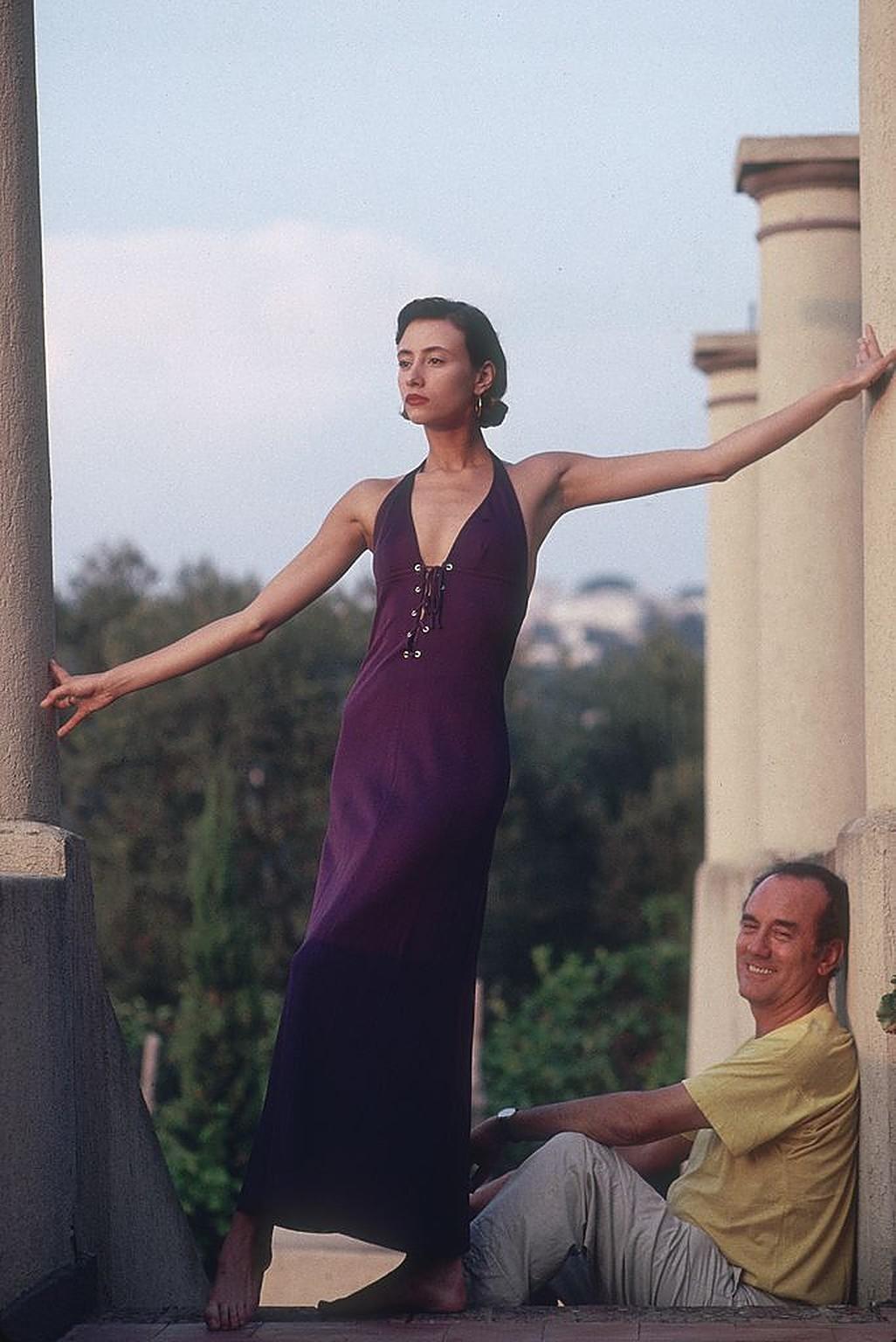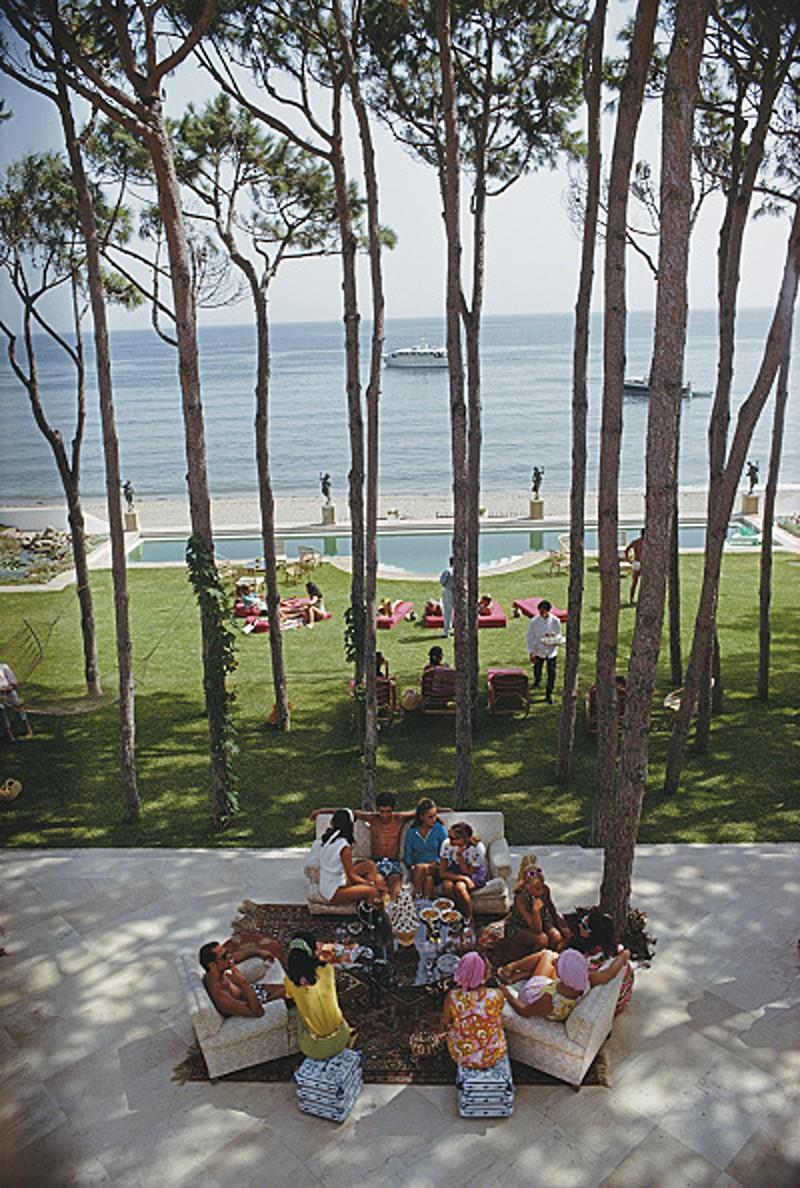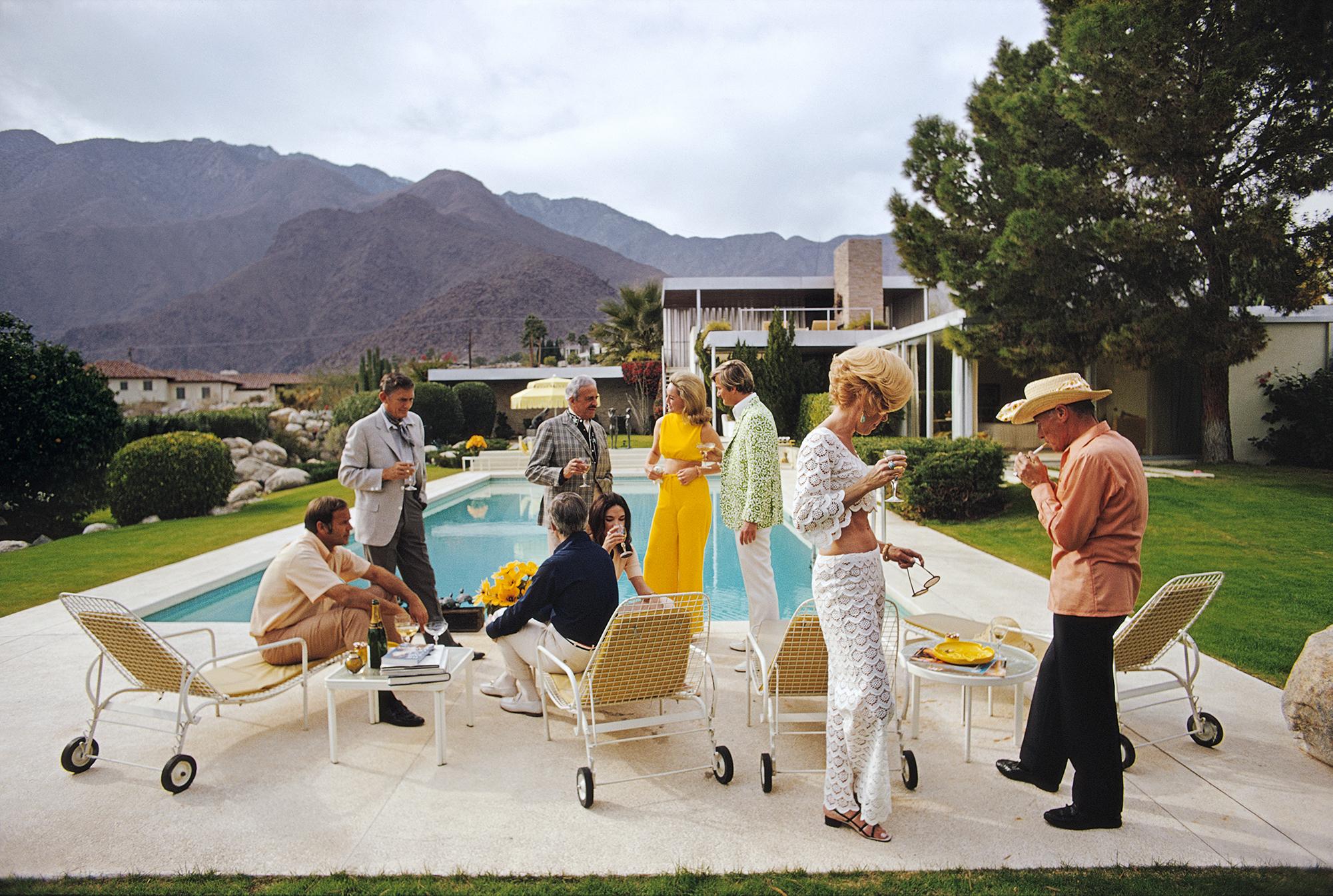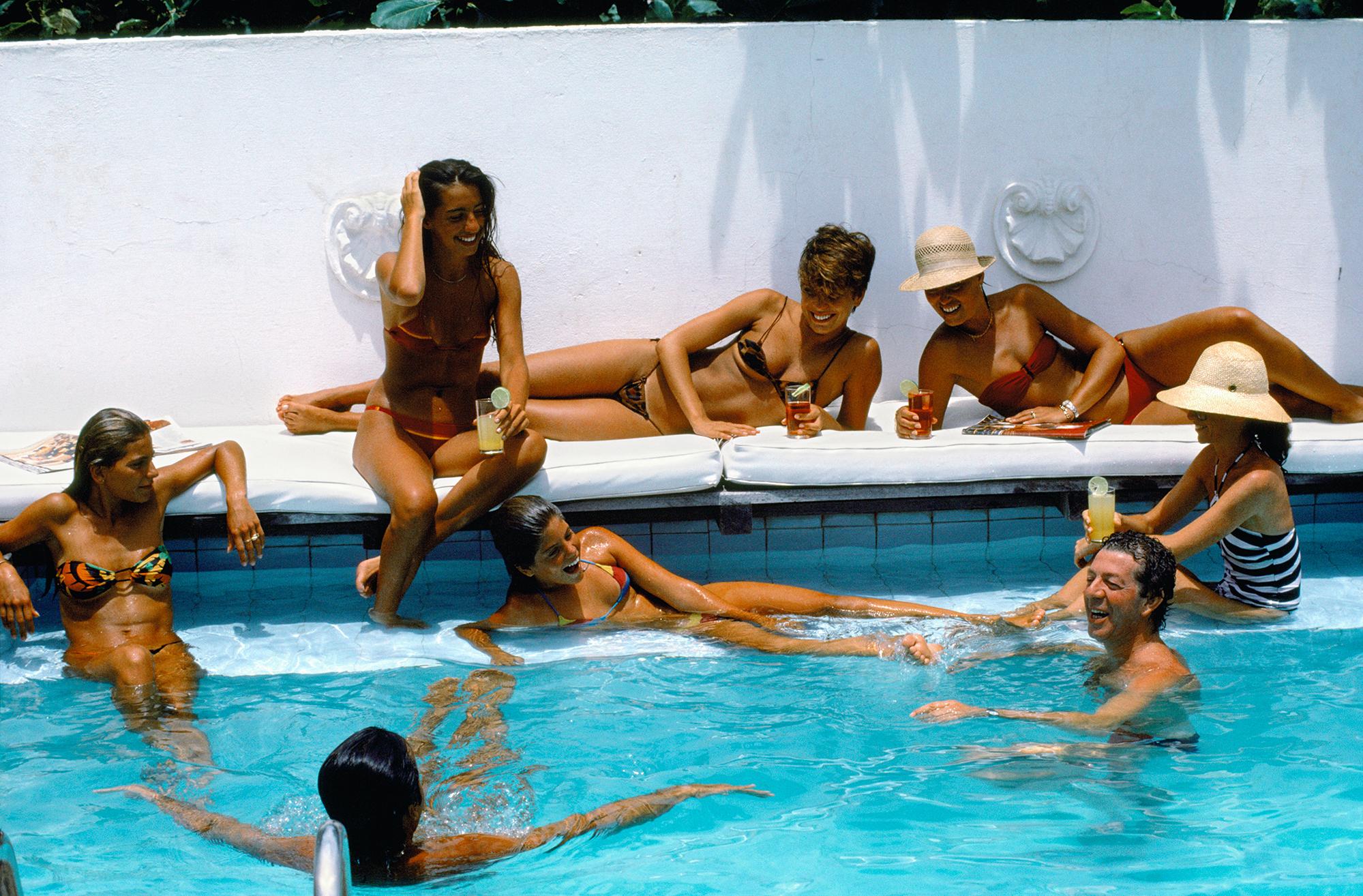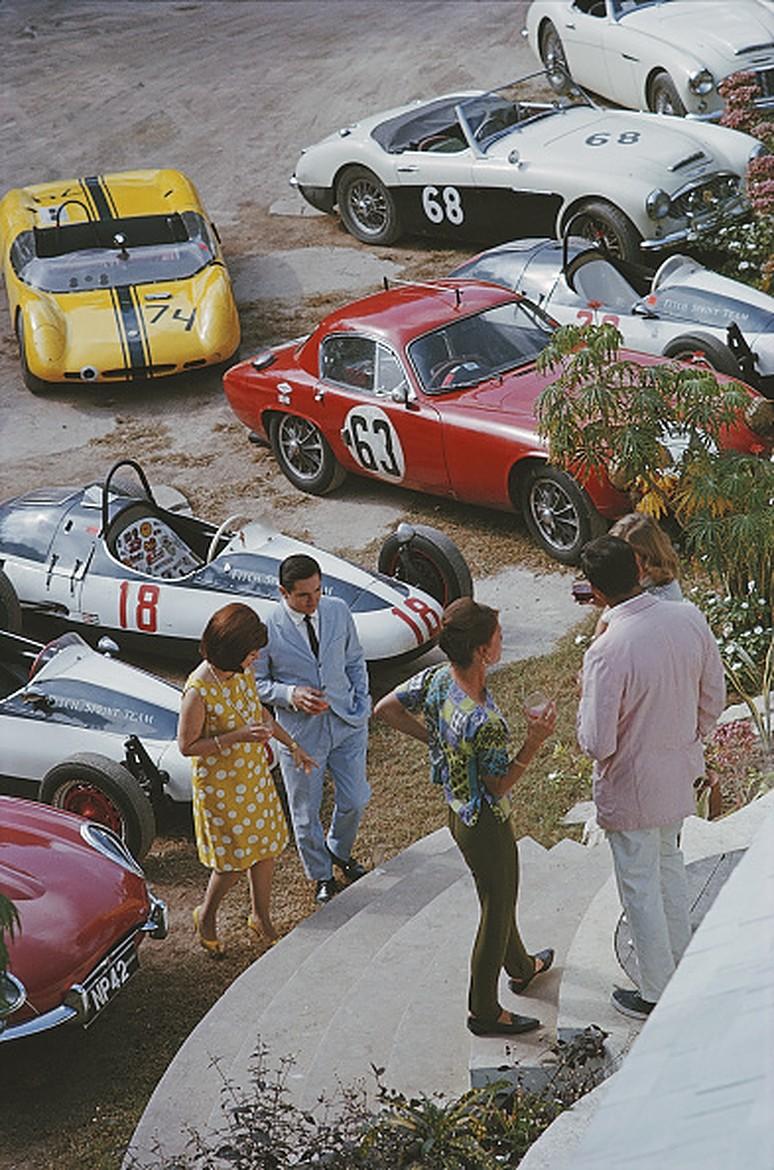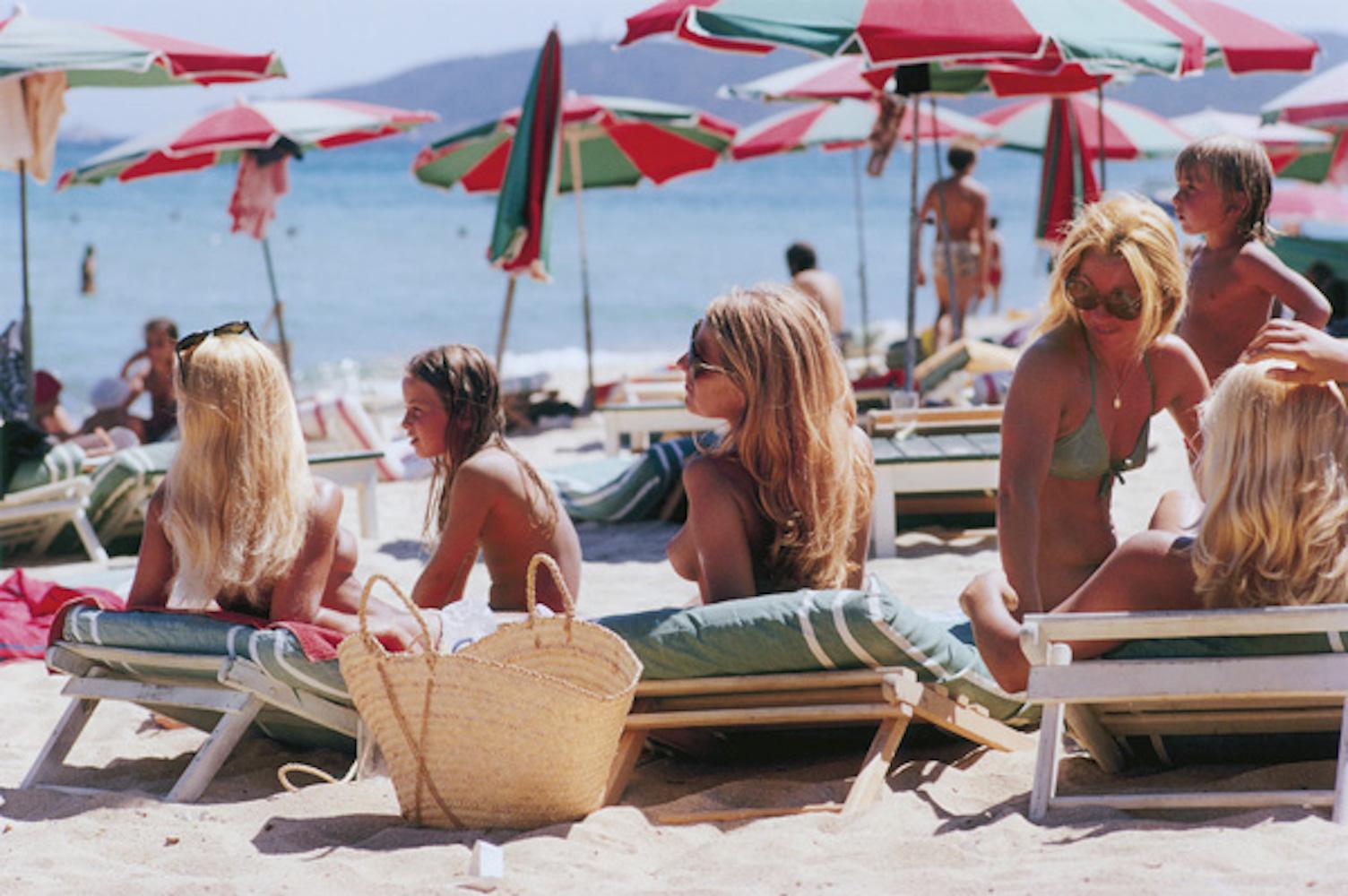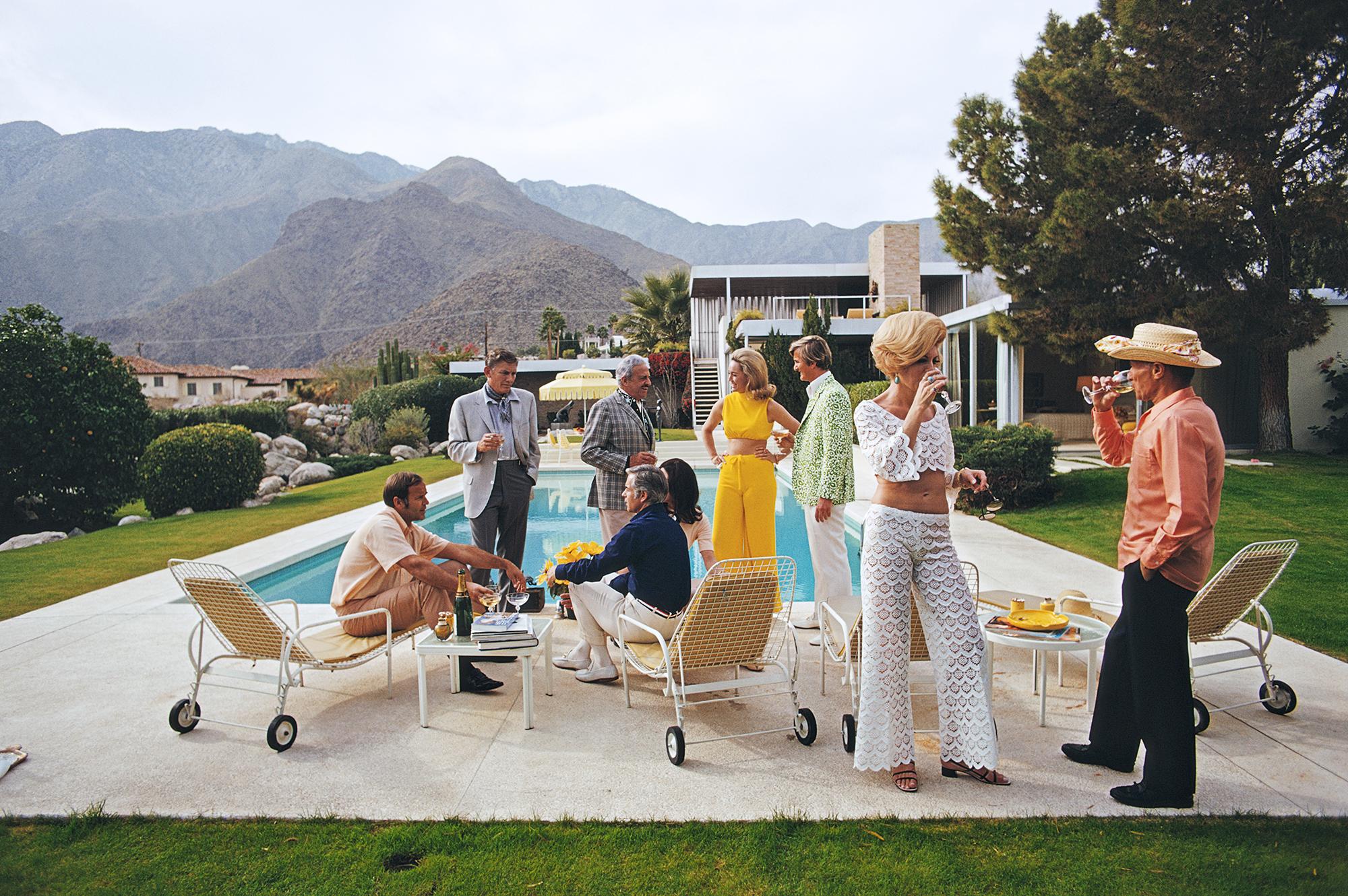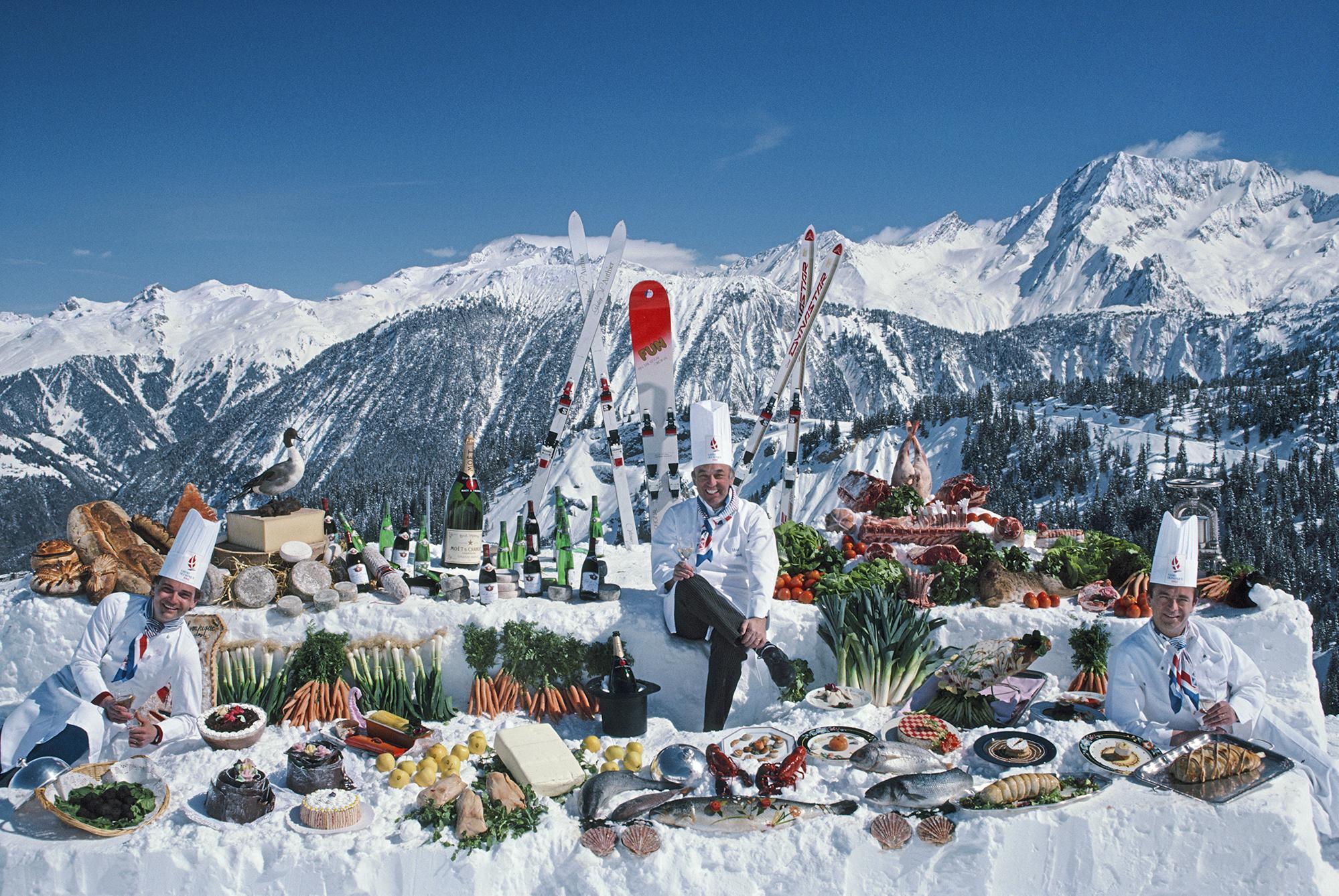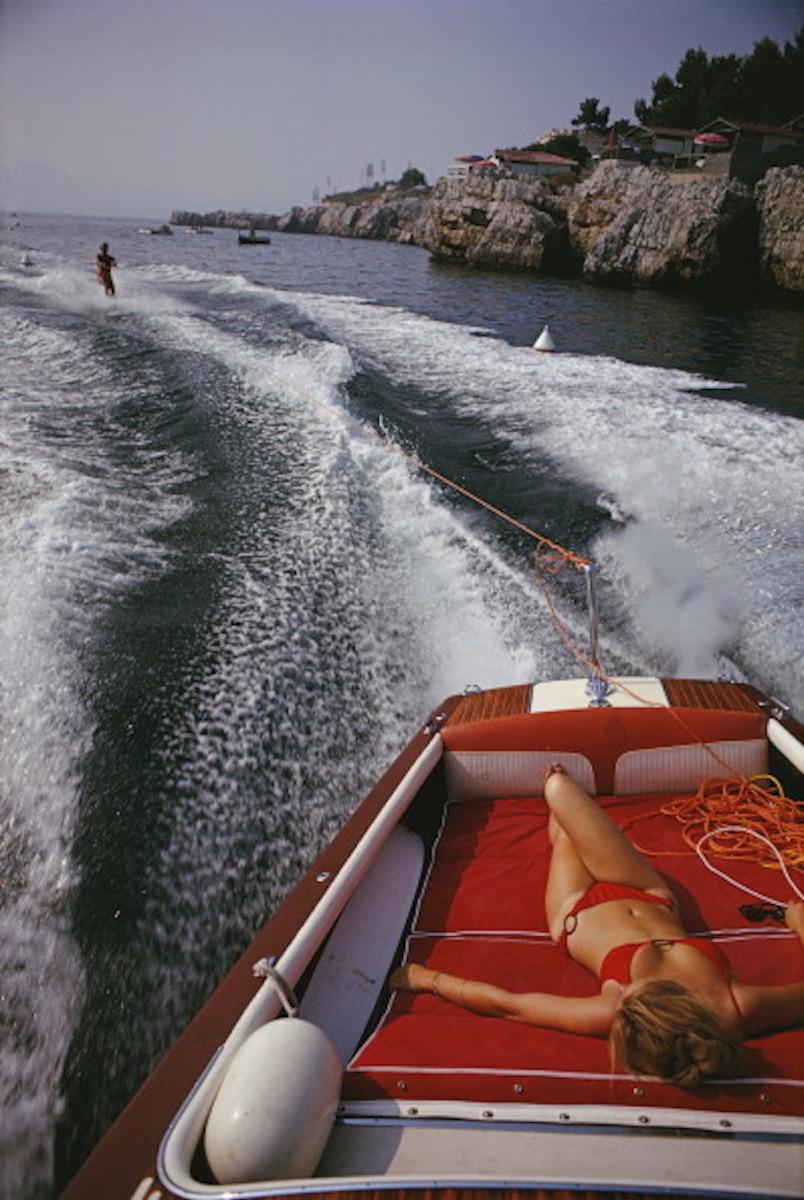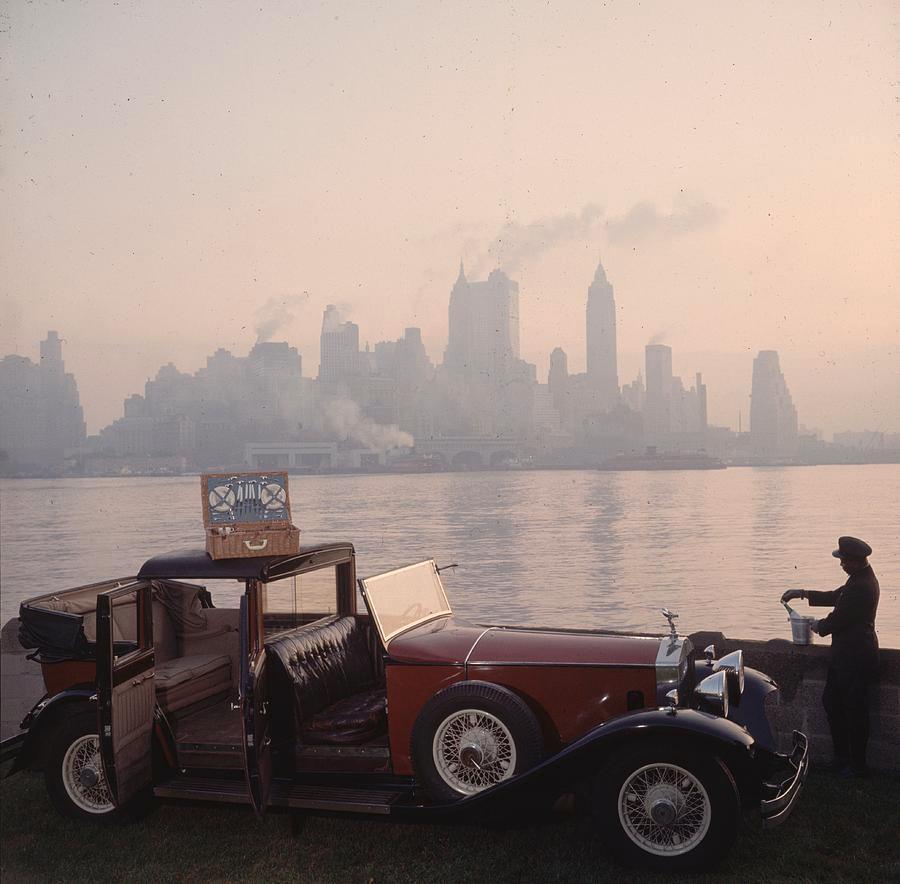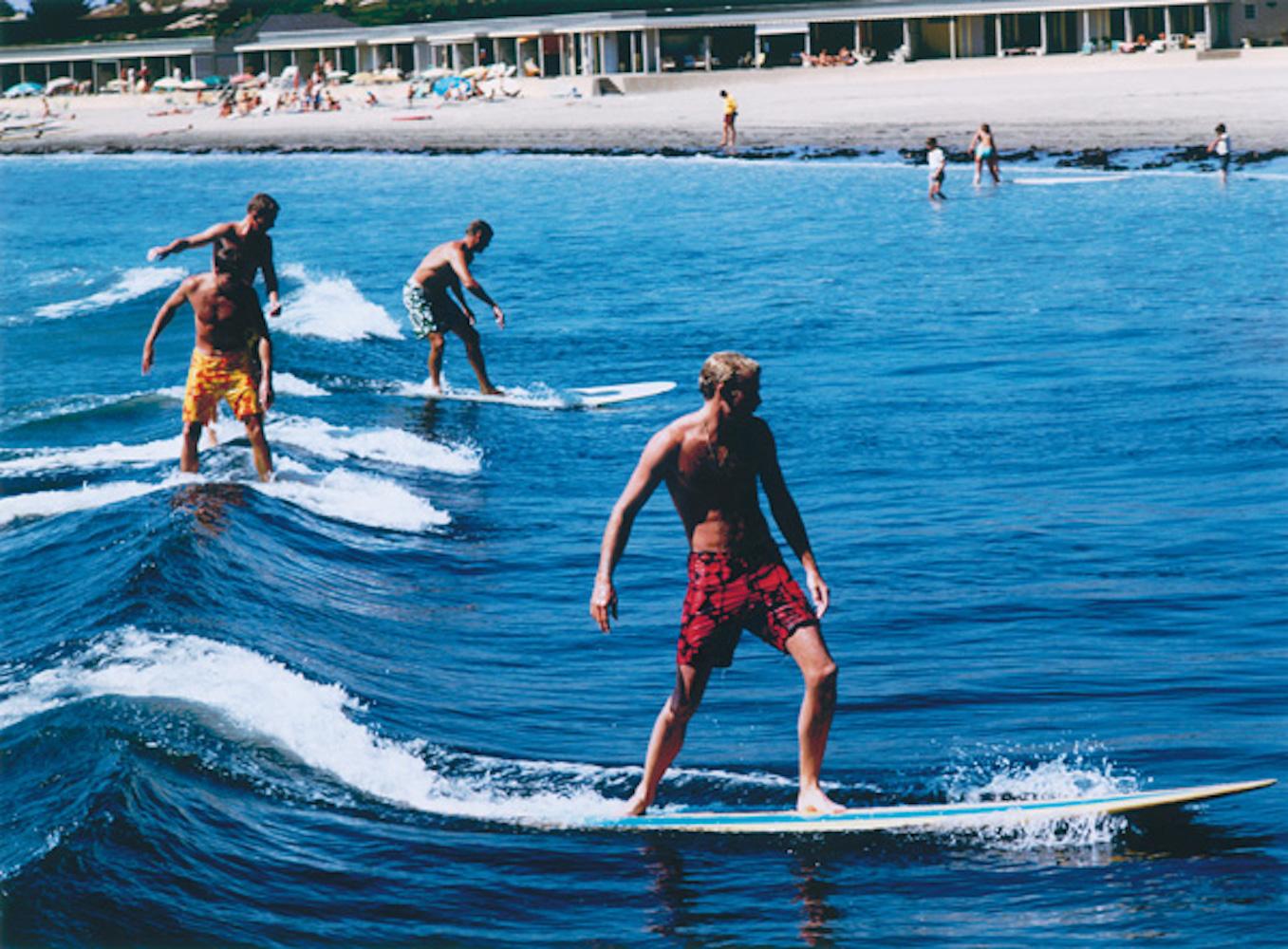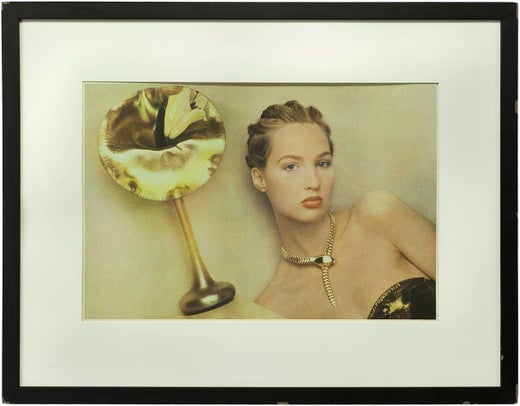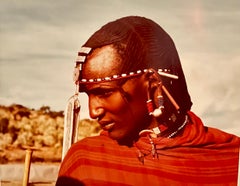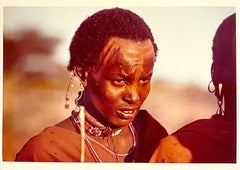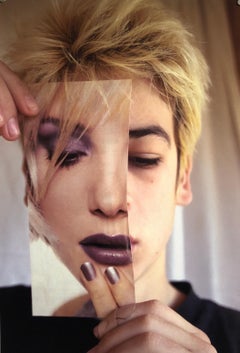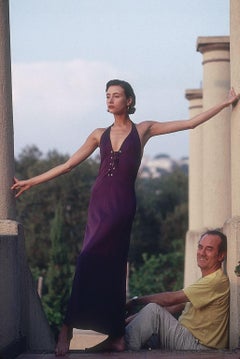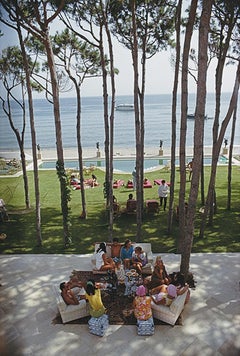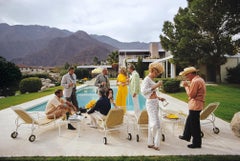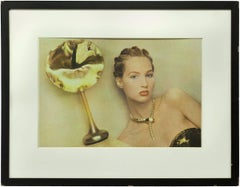
Rebecca, Tiffany Vase, Large Scale Sheila Metzner Photograph
View Similar Items
Want more images or videos?
Request additional images or videos from the seller
1 of 6
Sheila MetznerRebecca, Tiffany Vase, Large Scale Sheila Metzner Photograph1987
1987
$4,500List Price
About the Item
- Creator:Sheila Metzner (1939, American)
- Creation Year:1987
- Dimensions:Height: 28 in (71.12 cm)Width: 36 in (91.44 cm)
- Medium:
- Movement & Style:
- Period:
- Condition:needs to be reframed.
- Gallery Location:Surfside, FL
- Reference Number:Seller: 10451stDibs: LU3822319691
Sheila Metzner
Sheila Metzner (born 1939) is an American photographer. She was the first female photographer to collaborate with the Vogue magazine on an ongoing basis. Metzner lives in Brooklyn, New York. Metzner graduated from the High School of Art and Design and the Faculty of Visual Communications of the Pratt Institute. In the 1960s, she became the first woman to be promoted to art director by Doyle Dane Bernbach, an advertising agency. Thanks to this, she successfully collaborated with well-known photographers, including Richard Avedon, Melvin Sokolsky, Bob Richardson and Diane Arbus. Her first show in New York was called Friends & Family. She decided to show part of the images to the director of the Museum of Modern Art in New York, John Sarkovsky. In 1978, he bought one and included in MoMA exhibition Mirrors and Windows: American Photography Since 1960. A second exhibition – Photography (Spring 1981): Couches, Diamonds and Pie – took place there. After that, The New York Times and The Sunday Times published a photograph of Sheila's husband. In 2008 the School of Visual Arts presented the exhibition Time Line: Shelia Metzner at the Visual Arts Museum, New York.
About the Seller
4.9
Platinum Seller
Premium sellers with a 4.7+ rating and 24-hour response times
Established in 1995
1stDibs seller since 2014
1,788 sales on 1stDibs
Authenticity Guarantee
In the unlikely event there’s an issue with an item’s authenticity, contact us within 1 year for a full refund. DetailsMoney-Back Guarantee
If your item is not as described, is damaged in transit, or does not arrive, contact us within 7 days for a full refund. Details24-Hour Cancellation
You have a 24-hour grace period in which to reconsider your purchase, with no questions asked.Vetted Professional Sellers
Our world-class sellers must adhere to strict standards for service and quality, maintaining the integrity of our listings.Price-Match Guarantee
If you find that a seller listed the same item for a lower price elsewhere, we’ll match it.Trusted Global Delivery
Our best-in-class carrier network provides specialized shipping options worldwide, including custom delivery.More From This Seller
View AllRebecca, Tiffany Vase, Large Scale Sheila Metzner Photograph
By Sheila Metzner
Located in Surfside, FL
Sheila Metzner’s unique photographic style has positioned her as a contemporary master in the worlds of fine art, fashion, portraiture, still life and landscape photography. Looking at Metzner’s photographs is a captivating experience. Innocent, sensual, and sexual, each photo, regardless of subject, exhibits and elicits deep emotion. It is nearly impossible to just glance at Metzner’s photos; they beg to be studied. She says, “Photography in its most basic form is magic…This image, caught in my trap, my box of darkness, can live. It is eternal, immortal. The child in the image will not age as the living child will.”
Sheila Schwartz was born in 1939 to an orthodox Jewish family in a poor section of Brooklyn. While attending the School of Industrial Art in Manhattan (now the High School of Art and Design), she was awarded the Mayor Robert F. Wagner scholarship to the college of her choice. She chose Pratt Institute, where she majored in visual communication. Her fondness for painting and sculpture also led her to study with abstract artists Jack Tworkov and James Brooks.
After graduating in 1961, Sheila worked as an assistant to Lou Dorfsman at CBS Network Advertising. Five years later, she was hired by the Doyle Dane Bernbach advertising agency as its first female art director, and in 1968 she met and married director, creative director, and painter Jeffrey Metzner. While pregnant with their first child, she was riding in a cab with her mentor and friend, photographer Aaron Rose, discussing whether or not to give up her career in advertising. “He said, ‘You should be a photographer. You live like an artist. You have a good eye, you’d be good at it.’ ”
Metzner started taking pictures, amassing them slowly over the next 13 years, while raising her and Jeffrey’s five children—Raven, Bega, Ruby, Stella and Louie. Jeffrey’s two daughters from a previous marriage, Evyan and Alison, were also a regular part of the family. “When they were really small, I’d be with them during the day, photographing and printing at night. At eight or nine in the evening, when they were all asleep, I’d take a shower to wake up and put on high heels and lipstick, which I wore then, to give me the feeling of being ready to work.” She continues, “My children never interfered. When I couldn’t travel because of them, I would find a place in upstate New York and call it Antarctica or Egypt. I found microcosms.”
Nine years later, Metzner had accumulated a box of 22 pictures. One of them, a black-and-white photograph titled “Evyan, Kinderhook Creek,” caught the eye of John Szarkowski at the Museum of Modern Art, which he included in his famous and controversial exhibition “Mirrors and Windows: American Photography since 1960.” The New York Times art critic Hilton Kramer loved the picture and soon it became the dark-horse hit of the exhibition. Later that year, Metzner’s first solo show at the Daniel Wolf Gallery in New York drew record crowds.
Metzner was now ready to work in color, but not just conventional color. Of her subjects, she once said, “If I use a rose, I want it to be the essential rose—the rose Beauty brought to her father from the Beast’s garden.” Now she aspired to an essential kind of color. “I wanted something that would last. I was looking for Fresson even though I didn’t know they existed.”
The Fresson family works outside of Paris and specializes in a labor-intensive four-color “process de charbon” method, which they invented in 1895. Some prints can go up to seven colors, and are pigment prints, the only true archival color print. Metzner is one of just ten American photographers with whom they are willing to work. Fresson prints are the perfect complement to Metzner’s style—soft, sensuous, and grainy, the prints resemble paintings, with a finish which Metzner describes as “a glaze on fine porcelain. The moment I saw the neutral gray,” she adds, “I knew it was perfect.”
In 1980 Metzner showed her Fresson color prints at her second solo exhibition at the Daniel Wolf Gallery. This show led to commissioned editorial work for such magazines as Vanity Fair, Vogue, and Rolling Stone. She secured an exclusive contract with Vogue for the next eight years. Metzner considers her portrait of actress Jeanne Moreau for Vanity Fair a turning point in her career. “It gave me a chance to show my work to a broader audience. I wasn’t just producing photographs for the art world.”
Of Sheila’s foray into fashion, critic Carol Squiers says, “At a time when fashion photography was caught between sterility and the snapshot, Metzner created a sumptuous vision that stimulated the entire field.”
Metzner also started doing commercial photography around this time. Her first client was Valentino, soon to be followed by Bloomingdale’s, Perry Ellis, Revlon, Shiseido, Saks Fifth Avenue, Paloma Picasso, Victoria’s Secret, Levi’s, Ralph Lauren, and fragrances for Chloe and Fendi (the Fendi campaign won a Fragrance Foundation Recognition Award). Her work also appeared on John Mellencamp...
Category
1980s Modern Portrait Photography
Materials
Photographic Paper, C Print
Rare Vintage Color C Print Photograph African Maasai Warrior Chromogenic Photo
By Carol Beckwith
Located in Surfside, FL
Carol Beckwith, (American, b. 1945),
Maasai Portrait
Chromogenic print on paper, from Beckwith's book "Maasai" (1980),
Hand signed in pencil, dated and titled with name of sitter ...
Category
1970s Contemporary Color Photography
Materials
Photographic Paper, C Print
Rare Vintage Color C Print Photograph African Maasai Warrior Chromogenic Photo
By Carol Beckwith
Located in Surfside, FL
Carol Beckwith, (American, b. 1945),
Maasai Portrait
Chromogenic print on paper, from Beckwith's book "Maasai" (1980),
Hand signed in pencil, dated and titled with name of sitter ...
Category
1970s Contemporary Color Photography
Materials
Photographic Paper, C Print
Faces, Vintage Color Photograph Digital Photo Collage Print Asian American
By Emily Cheng
Located in Surfside, FL
This was from Muse X publishers. It came in a plastic bag signed Emily Cheng. (the plastic bag is not included) It is on Fuji crystal photo paper. It depicts two Asian faces in a cubist, fractured way, with a woman (or man) holding a photograph over his/her face. it is marked proof NFS and is not signed or numbered.
Emily Cheng (born in New York City, in 1953) is an American artist of Chinese ancestry. She is best known for large scale painting with a center focus often employing expansive circular images radiantly colored, radially composed.
Cheng received her BFA in 1975 from the Rhode Island School of Design and attended the New York Studio School. Cheng has exhibited widely in the US and in Asia. In 2011, Cheng created Charting Sacred Territories, an exhibition exploring world religions which opened in the Museum of Contemporary Art Taipei (MOCA) , Taiwan (2011) and traveled to Hanart TZ Gallery in (2015),
Shenzhen Art Museum, Shenzhen, China, (2015) and in Europe at the Palais Liechtenstein Feldkirch, Austria (2019).
Cheng has had numerous solo shows in the US and in Asia and is represented by Hanart TZ Gallery in Hong Kong. In 2007, Timezone 8 published a monograph of Emily Cheng titled, Chasing Clouds, a decade of studies, with essays by Kevin Powers and Johnson Chang. Emily Cheng has lived and worked in New York City since 1977 and teaches Asian Art History at the School of Visual Arts. Influenced by a wide array of eastern and western artists including Van Gogh, Gauguin, Manet and Giacometti as well as de Kooning, early Philip Guston and Jackson Pollock. Nicolas Carone...
Category
1990s Conceptual Portrait Photography
Materials
Photographic Paper, C Print
African American Large Vintage Color Photograph Dandy C Print Photo Ike Ude
By Iké Udé
Located in Surfside, FL
BEYOND DECORUM, CLOSED AND OPEN Series,
I am selling each individually. they are pairs of open and closed jackets. I will include the second photo for reference. This listing is just for the closed jacket photograph.
Vintage C-print on Fuji crystal archive paper.
Image size is 40 x 30", sheet measures 50 X 32
Provenance: printed by Muse X, Los Angeles.
I believe these were test, proof prints. They are not signed or editioned
The work of Nigerian-born Iké Udé explores a world of dualities: photographer/performance artist, artist/spectator, African/post-nationalist, mainstream/marginal, individual/everyman and fashion/art.
Iké Udé (born 1964) is a Nigerian-American photographer, performance artist,
Ike Ude was born in 1964 in Lagos, Nigeria where he was raised. The eldest son of a wealthy family, he was exposed to photography and portraiture at an early age by dressing up for biweekly family portraits. Udé knew he was an artist by the age of six, when he developed a habit of firing a catapult at passers-by when he disapproved of their walk or the way they were dressed. As an adolescent, Udé attended the Government Secondary School, a British boarding school in Afikpo Nigeria. He was a habitué of London before he moved to New York in 1981 to study Media Communications at Hunter College, CUNY. He began his art career in the late 1980s with abstract painting and drawing. Since the 1990s, photography has been his primary medium. Udé is a dual citizen of the United States and Nigeria.
Udé's paintings and drawings are less well known than his photography, though critics and art historians have recognized his early work. The late Henry Geldzahler, said of Udé's paintings and works on paper: "I am touched and amazed at the ways in which he manages to blend invisibly the modernist tradition with his own Nigerian roots. There is never anything forced in the conjunction; air and light seem to be his media."
Udé began his Cover Girls series in 1994. Each photograph imitates the cover of a popular fashion or lifestyle magazines, in which the artist himself is featured as the model. (ala the work of Cindy Sherman) The photographs were consciously stylized, posed, photographed and then paired with type matching that of the respected magazine. At first glance, each photograph appears to be an authentic magazine cover. Udé used the magazine cover as a stage to critique the fetishism of the upper class white model and the effects of popular culture on today's consumerist society. The series was exhibited in 1994 in the New York City gallery Exit Art.
Udé's black and white series of photographs, Uli, references both high fashion and Uli body art, wall motifs from Udé's Igbo heritage. The photographs explore the anonymity of the inscribed and disembodied self. Udé's dynamic use of light, namely the chiaroscuro effect, serves as a critical compositional element in the series.
Udé's Beyond Decorum series, begun in 1999, juxtaposes photographs of men's shirts and women's pumps with suggestive personal advertisements in place of the clothing tags.
With its accompanying book, Beyond Decorum: Photographs by Iké Udé, the series traveled across the United States and Canada. The exhibition was shown at the Institute of Contemporary Art in Portland, Maine; OBORO in Montreal, Canada; Sert Gallery; Carpenter Center at the Harvard University Art Museum; and MAK Museum in Vienna, Austria before traveling for two more years internationally.
Udé's Paris Hilton: Fantasy and Simulacrum is a conversation between his alter ego, Visconti, and the celebrity Paris...
Category
1990s Conceptual Color Photography
Materials
Photographic Paper, C Print, Color
African American Large Vintage Color Photograph Dandy C Print Photo Ike Ude
By Iké Udé
Located in Surfside, FL
BEYOND DECORUM, CLOSED AND OPEN Series,
I am selling each individually. they are pairs of open and closed jackets. I will include the second photo for reference. This listing is just for the closed jacket photograph.
Vintage C-print on Fuji crystal archive paper.
Image size is 40 x 30", sheet measures 50 X 36
Provenance: printed by Muse X, Los Angeles.
I believe these were test, proof prints. They are not signed or editioned
The work of Nigerian-born Iké Udé explores a world of dualities: photographer/performance artist, artist/spectator, African/post-nationalist, mainstream/marginal, individual/everyman and fashion/art.
Iké Udé (born 1964) is a Nigerian-American photographer, performance artist,
Ike Ude was born in 1964 in Lagos, Nigeria where he was raised. The eldest son of a wealthy family, he was exposed to photography and portraiture at an early age by dressing up for biweekly family portraits. Udé knew he was an artist by the age of six, when he developed a habit of firing a catapult at passers-by when he disapproved of their walk or the way they were dressed. As an adolescent, Udé attended the Government Secondary School, a British boarding school in Afikpo Nigeria. He was a habitué of London before he moved to New York in 1981 to study Media Communications at Hunter College, CUNY. He began his art career in the late 1980s with abstract painting and drawing. Since the 1990s, photography has been his primary medium. Udé is a dual citizen of the United States and Nigeria.
Udé's paintings and drawings are less well known than his photography, though critics and art historians have recognized his early work. The late Henry Geldzahler, said of Udé's paintings and works on paper: "I am touched and amazed at the ways in which he manages to blend invisibly the modernist tradition with his own Nigerian roots. There is never anything forced in the conjunction; air and light seem to be his media."
Udé began his Cover Girls series in 1994. Each photograph imitates the cover of a popular fashion or lifestyle magazines, in which the artist himself is featured as the model. (ala the work of Cindy Sherman) The photographs were consciously stylized, posed, photographed and then paired with type matching that of the respected magazine. At first glance, each photograph appears to be an authentic magazine cover. Udé used the magazine cover as a stage to critique the fetishism of the upper class white model and the effects of popular culture on today's consumerist society. The series was exhibited in 1994 in the New York City gallery Exit Art.
Udé's black and white series of photographs, Uli, references both high fashion and Uli body art, wall motifs from Udé's Igbo heritage. The photographs explore the anonymity of the inscribed and disembodied self. Udé's dynamic use of light, namely the chiaroscuro effect, serves as a critical compositional element in the series.
Udé's Beyond Decorum series, begun in 1999, juxtaposes photographs of men's shirts and women's pumps with suggestive personal advertisements in place of the clothing tags.
With its accompanying book, Beyond Decorum: Photographs by Iké Udé, the series traveled across the United States and Canada. The exhibition was shown at the Institute of Contemporary Art in Portland, Maine; OBORO in Montreal, Canada; Sert Gallery; Carpenter Center at the Harvard University Art Museum; and MAK Museum in Vienna, Austria before traveling for two more years internationally.
Udé's Paris Hilton: Fantasy and Simulacrum is a conversation between his alter ego, Visconti, and the celebrity Paris...
Category
1990s Conceptual Color Photography
Materials
Photographic Paper, C Print, Color
You May Also Like
Alison Cain - Society Portrait in Purple Silk by Greek Columns
By Slim Aarons
Located in Brighton, GB
Alison Cain - Society Portrait in Purple Silk by Greek Columns by Slim Aarons
16 x 20" print.
Limited Edition Estate Stamped Print.
Edition of 150.
Printed Later.
Alison Cain is a ...
Category
20th Century American Modern Portrait Photography
Materials
C Print, Color, Photographic Paper, Digital
Party in Marbella, 1967 - Beneath Trees in Andalusia in Nature with Friends
By Slim Aarons
Located in Brighton, GB
Party in Marbella, 1967 - Beneath Trees in Andalusia in Nature with Friends by Slim Aarons shows a group of friends enjoying conversation beneath trees on the Marbella coast
16 x 20...
Category
20th Century Modern Nude Photography
Materials
C Print, Photographic Paper, Color, Digital
Poolside Chat, 1970 - Chat by Swimming pool at Kaufmann House in Palm Springs
By Slim Aarons
Located in Brighton, GB
Poolside Chat, 1970 - Chat by Swimming pool at Kaufmann House in Palm Springs by Slim Aarons
16 x 20" print.
Limited Edition Estate Stamped Print.
Edition of 150.
Printed Later.
Po...
Category
20th Century American Modern Figurative Photography
Materials
Photographic Paper, C Print, Color, Digital
Pousada dos Buzios, 1975 - Nude Sunbathing Swimming Pool Spanish
By Slim Aarons
Located in Brighton, GB
Pousada dos Buzios, 1975 - Bathing Beauties by Swimming Pool with Cocktails by Slim Aarons
16 x 20" print.
Limited Edition Estate Stamped Print.
Edition of 150.
Printed Later.
"Pousada dos Buzios" is a Limited Edition Estate Stamped Digital C-Type print by 20th Century American photographer Slim Aarons.
Friends and acquaintances lying by the swimming pool at Pousada dos Buzios in Brazil are photographed by Slim Aarons. The man pictured is Italian restaurateur Stefano Monti.
Slim Aarons also photographed "Buzios" which is available in the gallery. Both "Pousada dos Buzios" and "Buzios" were taken in the same place, but spaced years apart. This image from August 1975...
Category
20th Century American Modern Portrait Photography
Materials
Digital, C Print, Color, Photographic Paper
Monocled Miss, 1964 - Breakfast in Bed New York Hotel Renata Boeck German Model
By Slim Aarons
Located in Brighton, GB
Monocled Miss, 1964 - Breakfast in Bed New York Hotel Renata Boeck German Model by Slim Aarons
16" x 16" print on 16" x 20" paper.
Limited Edition Premium Collection Estate Stamped ...
Category
20th Century American Modern Portrait Photography
Materials
Photographic Paper, Color, C Print, Digital
Bahamas Speed Week - Formula One Grand Prix Automobiles Bahamas Nassau City
By Slim Aarons
Located in Brighton, GB
Bahamas Speed Week - Formula One Grand Prix Automobiles Bahamas Nassau City by Slim Aarons
16 x 20" print.
Limited Edition Estate Stamped Print.
Edition of...
Category
20th Century American Modern Portrait Photography
Materials
Photographic Paper, Color, C Print, Digital
